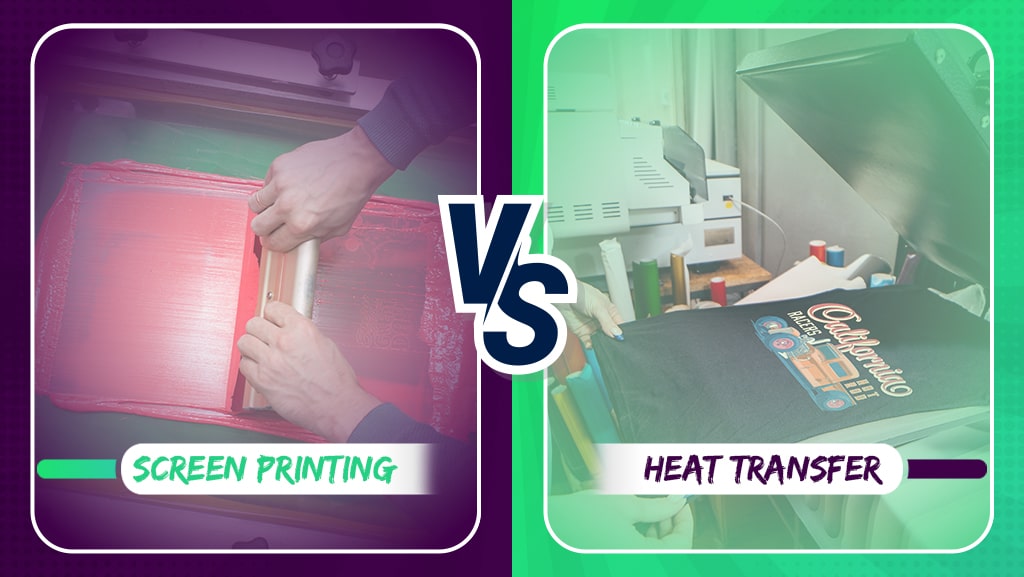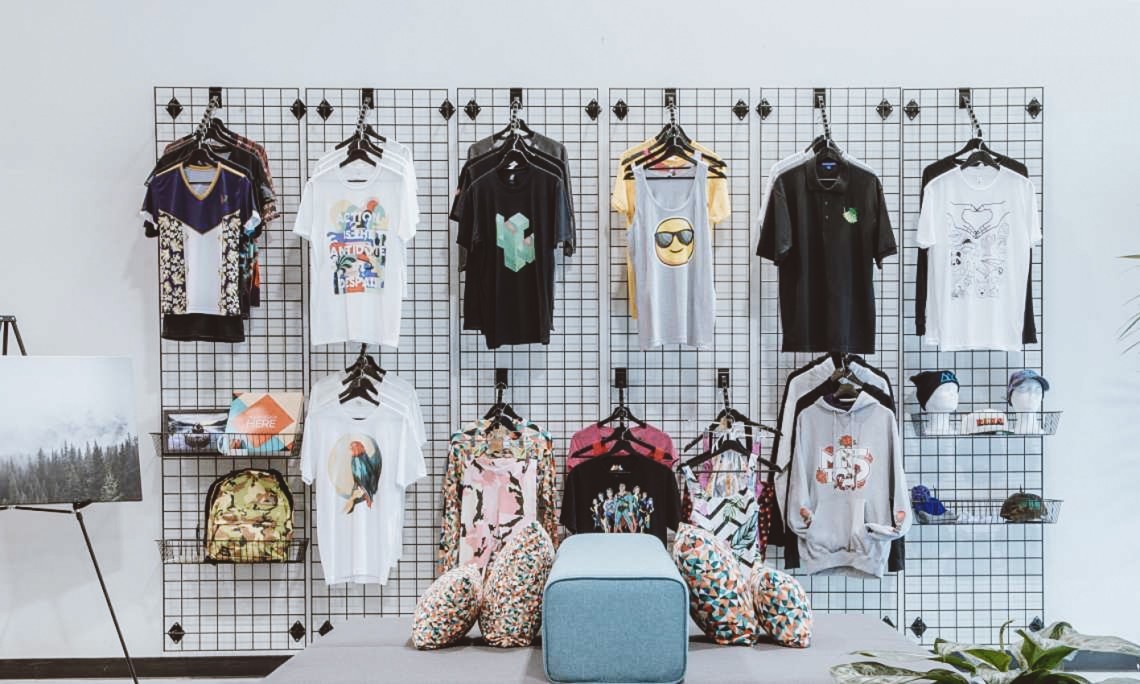Unknown Facts About Tx Tees
Unknown Facts About Tx Tees
Blog Article
Getting The Tx Tees To Work
Table of ContentsGetting The Tx Tees To WorkAn Unbiased View of Tx TeesThe Main Principles Of Tx Tees Some Known Facts About Tx Tees.Tx Tees Can Be Fun For AnyoneTx Tees for DummiesA Biased View of Tx Tees
Add up various other expenses, like the number of energies it takes to run the shop and the cost of ink and solution per design. Take the print listed below.The emulsion must just be a couple of cents since you 'd only need to coat one display for this job. Exactly how much should you bill per tee shirt to make a profit? Typically, printers try to make up to 45% revenue on a print task. Right here's a table to aid you establish that: total cost per item percent of desired profit as a decimal (example:.25 or.45) profit made per product per task Currently allowed's talk concerning the profitability of DTF.

With DTF, you can print a handful of shirts, or simply one. Both screen printing and DTF have their particular niches in the world.
Some Known Details About Tx Tees
The most effective method to recognize? Ask about and see what printing shop like yours are doing. screen printing shop. Try both out and see which you like much better
When you're selecting what kind of printing approach to use for printing your art work styles on your garments, it's vital that you know the differences between these 2 techniques so you can maximize results while reducing expenses. Screen printing is the most frequently utilized method for publishing styles on textiles.
DTG printing is likewise understood as area or direct to garment printing since it publishes only what is needed as opposed to making a screen as display printers do. https://worldcosplay.net/member/1743892. Screen printing functions by screen filler squeegee screen printing ink display mesh screen, after that transferring the photo to garment utilizing warmth and/or stress
The DTG printer utilizes unique dye-sublimation inks that are used into a pre-designed picture by a digital printing system. The inks become component of the textile, enabling for vibrant shades and remarkable information. It's also called place or direct to garment printing since it publishes only what is required rather than making a screen as screen printers do.
Little Known Questions About Tx Tees.
It's much quicker - you can publish a fullcolor photo in mins, as opposed to hours for display printing. Second, there's no established up time or expenses included - you can publish any type of style you such as, without having to develop a display. Third, there's no waste - since display printers screen print one style each time, they have to screen each color separately.
The paper is really pricey and can just be made use of as soon as. Once it's published on, it needs to be disposed of. - The preliminary purchase price is less than the upfront financial investment of DTG printers- You can publish multi-color styles one screen at a time instead of needing to publish each color individually like DTG printing.

The Greatest Guide To Tx Tees
Nevertheless, as opposed to using display mesh as screen printers do, color sublimation printers make use of laser technology to transfer your pictures onto garments or paper. A warmth procedure moves the dye from its solid-state directly into the gas stage which subsequently fuses it onto fabric substrates when they are quickly warmed to heats under high pressure.
Sublimation printing is environment-friendly. It makes use of less water than screenprinting, and because it doesn't involve using damaging solvents, it's secure for all kinds of garments. The color sublimation inks are also odor free when treated, unlike screen printers that utilize dangerous chemicals throughout the screen printing process that leave an undesirable smell.
They additionally conserve cash on pricey tools like direct exposure devices given that color sublimation printers do not call for a UV direct exposure system or a flash remedy oven that is normally made use of in display printing (custom t-shirt design). What is direct to garment printing (DTG Printing)? DTG printing is a digital screenprinting process that publishes straight onto material utilizing specialized inkjet printers
The 45-Second Trick For Tx Tees
DTG printing offers several advantages over conventional screenprinting, consisting of the capability to print photo high quality photos, higher color vibrancy, and the capacity to print layouts on darker materials. DTG printers function by heating up the fabric ink up until it develops into a gas. The gas after that penetrates the textile, bonding with the fibers to develop a long-term print.

Display printers just prepare their screen then start publishing till they lack item or ink.- There is a large variety of skilled screen printers throughout the globe, which can be practical for novices. - It's a slower process - screen printers often have to await the ink to completely dry before they can print the following shade- Screen printers require manual work, so there's a greater discovering curve and it takes longer to produce a top quality design- Display printing isn't as precise as DTG printing, so you may obtain some "bleeding" of colors from one component of the picture onto another otherwise done correctly.
Getting The Tx Tees To Work
Nevertheless, rather of utilizing display mesh as screen printers do, color sublimation printers use laser innovation to transfer your pictures onto garments or paper. A warmth process transfers the color from its solid-state directly into the gas stage which in turn merges it onto textile substrates when they are quickly warmed to high temperature levels under high stress.
Sublimation printing is environmentally friendly. It utilizes much less water than screenprinting, and because it doesn't entail using dangerous solvents, it's safe for all kinds of clothing. The color sublimation inks are also odor free when treated, unlike display printers that make use of damaging chemicals throughout the display printing procedure that leave behind an unpleasant odor.
They likewise conserve cash on pricey equipment like exposure you could look here systems considering that color sublimation printers do not require a UV exposure unit or a flash remedy oven that is commonly made use of in screen printing. What is straight to garment printing (DTG Printing)? DTG printing is a digital screenprinting process that prints directly onto fabric utilizing specialized inkjet printers.
The Ultimate Guide To Tx Tees
DTG printing supplies several advantages over typical screenprinting, consisting of the capability to print photographic top quality photos, higher color vibrancy, and the ability to publish styles on darker materials. DTG printers work by warming the textile ink until it becomes a gas. The gas then penetrates the textile, bonding with the fibers to produce a permanent print.
Report this page